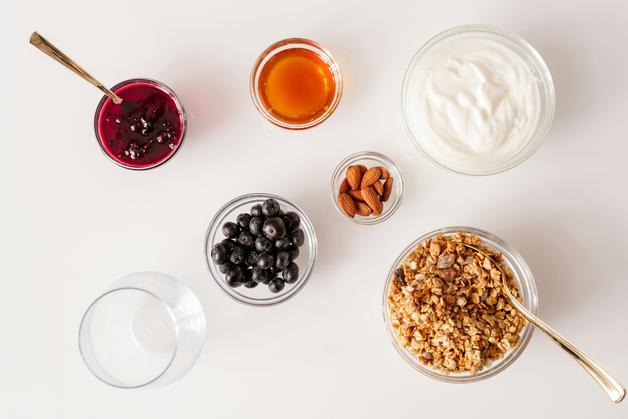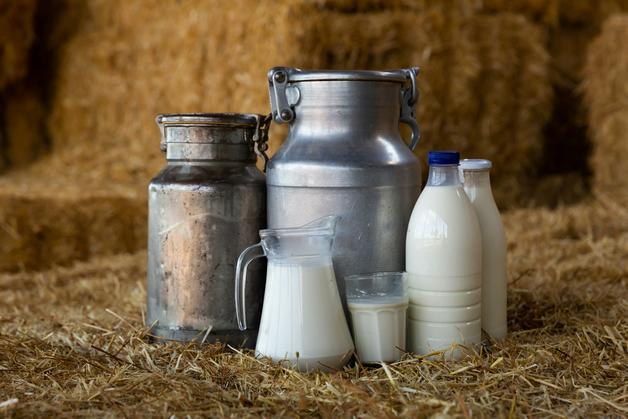Longing for a nourishing food that can gently guide your baby into the world of solids—a food that promises both creamy comfort and robust health benefits? Many parents worry about allergies, digestion, taste acceptance, and the seemingly endless debate between choosing dairy or plant-based alternatives. Does the word “baby yogurt” conjure up questions about safety, nutrition, or age-appropriateness? If so, you are in excellent company. Understanding the exact moment and the safest way to introduce baby yogurt, while balancing modern nutritional science and traditional wisdom, can feel overwhelming. Below, discover answers built on scientific insight and practical experience—bringing clarity, actionable options, and peace of mind.
What Sets Baby Yogurt Apart?
At first glance, yogurt looks deceptively simple. Yet, the world of baby yogurt is both nuanced and lush with choices. Crafted from whole milk and intentionally free of added sugars, honey, and artificial flavourings, this variety stands apart from regular yogurt on the supermarket shelf. Why the fuss over full fat? Young brains demand energy—lipids fuel critical neural pathways, accelerating both cognitive and physical milestones. Peeking at the label, you’ll notice many high-quality baby yogurts boast extra fortification: calcium, vitamin D, and sometimes even folic acid or iron.
If you ever scanned the ingredients with furrowed brows, you might have seen terms like “live and active cultures.” These probiotics—a squadron of beneficial bacteria—support digestion, nurture gut flora, and can even foster early resilience against allergies. A baby’s gut, freshly exposed to solid foods, is delicate. That’s why pasteurisation matters; only pasteurised yogurts should land on your baby’s spoon in these early months.
Let’s not sideline texture: baby yogurt is delightfully creamy and silky-smooth. This makes it a champion for infants who are just learning to manoeuvre more complex textures in their mouths, enhancing sensory development and encouraging oral skills.
Ready, Set, Spoon: When and How to Introduce Baby Yogurt
The six-month milestone often marks a new adventure—one filled with anticipation, trial, and (sometimes) hesitation. Around this age, most babies show readiness signs: sitting with confidence, holding up their heads, opening wide at feeding times, exploring food with eager curiosity. Baby yogurt, introduced at this moment, acts as a bridge between milk feeds and a more varied palette.
How much is too much? Begin with a teaspoon or two, observing carefully for any signs of discomfort or allergy. Gradually scale up to 60–120 ml (2–4 ounces) per day, ensuring baby yogurt complements but does not replace the nutritional foundation of breast milk or infant formula—these remain the main sources of energy until the first birthday.
Curious about presentation? Offer baby yogurt by spoon or, if your child craves autonomy, preload a silicone spoon to foster self-feeding confidence. The thicker consistency of Greek yogurt makes it especially manageable for small hands, while a swirl of pureed banana, stewed apple, or softened carrot can create delicious combinations without resorting to sugar-laden store varieties.
Introducing one new ingredient at a time—followed by a three-day observation window—allows you to isolate and pinpoint any potential allergens. Medical science is unequivocal: avoid raw milk, honey, and added sugars entirely for the first year.
Should family history include dairy allergies, a chat with your paediatrician is advised before yogurt ever leaves the fridge.
The Science Behind Baby Yogurt: Nutrition Explained
What exactly makes baby yogurt a cornerstone in weaning? It’s not just tradition—it’s biology and evidence.
- Protein: Builds the foundations of muscles, organs, and immune function; baby yogurt offers easily digestible protein for swift growth.
- Healthy fats: Power the brain as neurons form and synaptic connections flourish.
- Calcium and vitamin D: Strengthen bones and teeth, partnering closely for skeletal health.
- Probiotics: Support digestive health, nurturing beneficial bacteria that can help regulate stools, reduce tummy troubles, and defend against harmful pathogens.
- Vitamins B6, B12, and A: Bolster tissue repair, energy metabolism, vision, and immunity.
Interestingly, the structure of baby yogurt also helps in the shift from liquids to solids, preparing gums and jaws for eventual chewing while maintaining a gentle, non-irritating profile.
Choosing the Right Baby Yogurt
It’s natural to feel the weight of choice. Should you pick cow’s milk or goat’s milk yogurt? What about fortified soy? The best offerings are always plain, full-fat, and pasteurised yogurt—with “live cultures” ticked on the packaging. For some, plant-based options like fortified soy yogurt are a necessity due to allergy or personal preference; but do scrutinise these for adequate protein, calcium, and vitamin D.
Words like “organic” on a tub may reassure—these yogurts often come without pesticide residues or antibiotics—though nutritional value remains comparable to conventional options if you’re focusing on core nutrients. Always skip any product listing thickeners, added sweeteners, or exotic flavouring agents.
A final note: fresh fruit or safe nut butters (after introducing each one separately) can transform baby yogurt into an enticing, healthful bowl without undermining its nutritional integrity.
Safety: Allergies and Common Concerns
Worried about allergy? That’s entirely understandable. Dairy remains one of the most common infant allergens. Signs of trouble can appear swiftly or after several exposures and may include rash, hives, swelling, vomiting, coughing, or diarrhoea. In contrast, true lactose intolerance is exceptionally rare in infancy because a baby’s digestive system is primed for milk digestion. Still, if any worrisome symptoms surface, pause yogurt immediately and seek medical input.
Too much dairy at this stage can also disrupt iron absorption—one reason medical experts recommend moderation and emphasise iron-rich foods (like pureed lentils, spinach, or meat) alongside baby yogurt.
Above all, never substitute pasteurised, full-fat baby yogurt with artisanal, unpasteurised dairy or products that risk foodborne illness, especially unprocessed cow’s milk or yogurt blended with honey before one year.
Creative Serving Ideas, Meal Planning, and Storage
Feeling stuck with plain yogurt? There’s an entire palette of culinary creativity awaiting you. Mix baby yogurt with:
- Pureed mango, apple, or papaya (beta-carotene galore!).
- Steamed and mashed pumpkin or sweet potato.
- Iron-fortified baby cereal for a complete prandial experience.
Greek-style baby yogurt lets little ones try self-feeding sooner; you might pre-load spoons or offer small dollops as finger food practice. As a savoury twist, baby yogurt can become a gentle dip for cooked vegetable sticks or soft bread.
Meal planning tip: Start with minimal amounts and increase gradually—always attuned to your child’s hunger cues and reactions. Rotate flavors and pairings to awaken curiosity (and prevent boredom).
Leftovers? Always refrigerate baby yogurt swiftly after opening and use within 24 hours for maximum safety. If traveling, store portions in an insulated bag with an ice pack. Discard at any sign of sour smell, separation, or colour change.
Homemade vs Store-Bought Baby Yogurt
Making baby yogurt at home feels reassuring for many—control over ingredients, absence of additives, and tailoring of texture and flavour. Stringent attention to hygiene is non-negotiable: always opt for pasteurised milk, sterilised utensils, and prompt refrigeration. Home-prepared baby yogurt maintains freshness for 3–5 days post-setting.
For busier days, store-bought options deliver consistency and peace of mind about bacterial safety, provided you choose plain, pasteurised, and additive-free varieties.
No matter the source, the hallmarks are identical—live cultures, full-fat content, and absolute absence of honey or added sugar.
Practical Tips, Myths, and Solutions
Is your baby wrinkling their nose at the first spoonful of baby yogurt? Don’t fret. Accepting new textures is an incremental process. Blend yogurt with a favourite fruit or a bit of mild spice like cinnamon (if already introduced) to encourage acceptance.
Lactose intolerance, often misunderstood, rarely surfaces at this age; the live cultures in baby yogurt further break down lactose, making it gentler than cow’s milk. For allergic babies, alternatives like goat’s, sheep’s, or fortified soy-based yogurts serve as options—but always under medical advice and after a careful check of nutritional sufficiency.
Routine paediatrician reviews and dietary logs can streamline the introduction of allergenic foods. And if persistent doubts linger, safe is always better—pause, consult, and proceed with confidence.
Fostering Healthy Eating Habits
Introducing baby yogurt in its unsweetened, natural state performs double duty: nourishing the body and shaping taste preferences for years to come. Children exposed to authentic flavors, beautifully unmasked by sugar or chemicals, often embrace a broader range of healthy foods as they grow.
Pairings matter, too. Baby yogurt alongside vegetables, fruits, and grains provides variety—helping little ones discover joy in culinary exploration.
Key Takeaways
- Baby yogurt is more than just a snack—it’s a foundation for growth, gut health, and developing eating skills.
- Begin introducing full-fat, plain, pasteurised baby yogurt around six months, always starting small and watching for reactions.
- Greek-style, organic, and plant-based yogurts offer variety; always double-check nutritional adequacy and ingredient lists.
- Avoid raw milk, honey, and added sugars under twelve months, and always prioritise iron-rich complementary foods.
- Flexibility is key. Medical consultations are invaluable, especially for allergy-prone families—nutritional needs and feeding preferences vary, and trusted professionals offer support every step of the way.
- Explore more guidance and tailored advice by downloading the application Heloa, a resource brimming with personalised tips and free health questionnaires for your child.
Questions Parents Ask
Is baby yogurt the same as regular yogurt?
Not exactly. Baby yogurt is designed specifically for infants, using pasteurised milk and boasting a super smooth texture to ease those first bites. This variety often leans on extra nutrients like vitamin D and iron, catering to the unique growth needs of little ones. Unlike many regular yogurts—which might carry added sweeteners, flavours, or even preservatives—baby yogurt keeps it clean and gentle. The emphasis is on safety and easy digestion, making it the preferred early option for young tummies.
Can I give flavoured or sweetened yogurt to my baby?
Tempting as it may be, the best bet is always plain, unsweetened options when it comes to baby yogurt. Early exposure to sugary foods can shape taste buds, heightening cravings in the future and raising questions about lasting health habits. If you wish to enhance taste profiles, opt for a swirl of fresh mashed fruit or vegetable puree—these bring both sweetness and a nutrient punch to the table, sparing your baby from unnecessary sugars or additives.
How do I choose a baby yogurt if my child has an allergy or sensitivity?
Allergic to dairy, or simply worried about how your baby will cope with new proteins? Exercising caution is wise. Assess every label carefully—cow, goat, and sheep’s milk all carry allergy risks. If there’s a history of food sensitivity, consult your doctor before introducing any variant. Sometimes, fortified soy yogurts step in as suitable alternatives, but these should offer matching amounts of protein, calcium, and vitamin D. Every baby is unique—professional guidance shapes the safest journey for your little one. When in doubt, pause and reach out for help.









